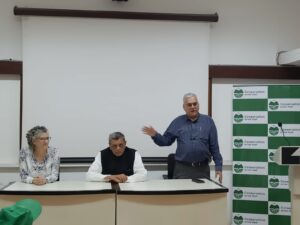Maharashtra Assembly Election 2019: No mention of environment in BJP, Sena manifestos

Two major political parties fighting the polls – Bharatiya Janata Party (BJP) and Shiv Sena –have not included environmental problems in their manifestos.
While the BJP released its manifesto on Tuesday, the Sena released its manifesto on October 12. The state has witnessed floods in different parts of the state owing to extreme weather events and loss of green zones such as Aarey, mangroves, national parks and wildlife sanctuaries. “It is an alarming state for Maharashtra’s environment, with every facet under threat,” said Madhav Gadgil, ecologist.
Maharashtra diverted 11.3 sqkm of forest land, equivalent to 2,277 football fields, in 2018 for various development projects, according to central government data. The state also recorded most tiger parts seizures globally over 19 years, while maintaining its record for the second highest tiger deaths in India for three consecutive years.
“Despite being the source of life, nature and wildlife do not have a vote, and thus don’t feature as mainstream agenda for political parties,” said Sanjay Upadhyay, Supreme Court lawyer.
“While our Prime Minister issues statements on environment protection, it is baffling to see it missing from the vision for Maharashtra,” said Bhagwan Kesbhat, founder, Waatavaran.
“Growth is welcome, but it cannot take place at the expense of the health of our future generations,” said Debi Goenka, executive trustee, Conservation Action Trust.
Madhav Bhandari, Maharashtra BJP spokesperson, said, “ The focus towards environment starts right from our Prime Minister’s endeavours and trickles down to every party worker.”
“We are the only political party to have identified a five-point agenda towards environmental conservation,” said Neelam Gorhe, Sena spokesperson. “From providing electric buses and policies for the same, sewage treatment plants across rural areas for river rejuvenation, formation of a separate department for river rejuvenation apart from Jal Shakti, a policy on mangrove protection across Konkan coast, and lastly developing more urban forests across degraded zones.”
“Thirteen proposed metro lines in Mumbai will bring down vehicular emissions drastically. We have specified that for Aarey, we will not cut more trees than required. The reason these topics were not mentioned was because our work towards it is already underway with a clear focus,” said Bhandari.
Meanwhile, as a part of the 51-page joint manifesto from the Congress and the NCP released on October 8, a separate chapter was allocated for environment conservation, with the two parties promising a policy decision to ensure environment conservation by balancing development, with specific mention of environmental issues being faced in Mumbai such as protests for tree cutting at Aarey Colony, preventing encroachments on the banks of Mithi River, addresssing coastal pollution and safeguarding the city’s salt pans.
“Our party is doing 100 times more than anyone else for environment. Right from being the first in the country to bring in electric buses in public transport in 2014, to plastic ban in Maharashtra, going onto river and beach cleans, and fighting to save Aarey,” said Shiv Sena leader Aaditya Thackeray.
“Environment is an everyday thing and if you see our manifesto, it has got environment aspect embeded in every subject head: transport (EV), agriculture (water conservation and drip irrigation), energy (renewable) etc. Aarey isn’t in the manifesto because it is a Mumbai topic, our manifesto doesn’t have regional sections and also Aarey is an ongoing resistance movement rather than a topic of infra or social welfare scheme,” he said.

